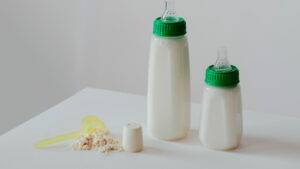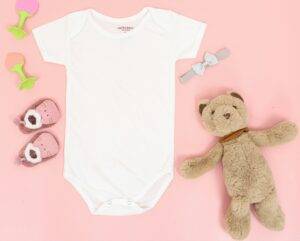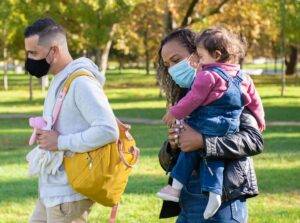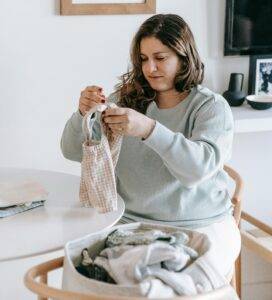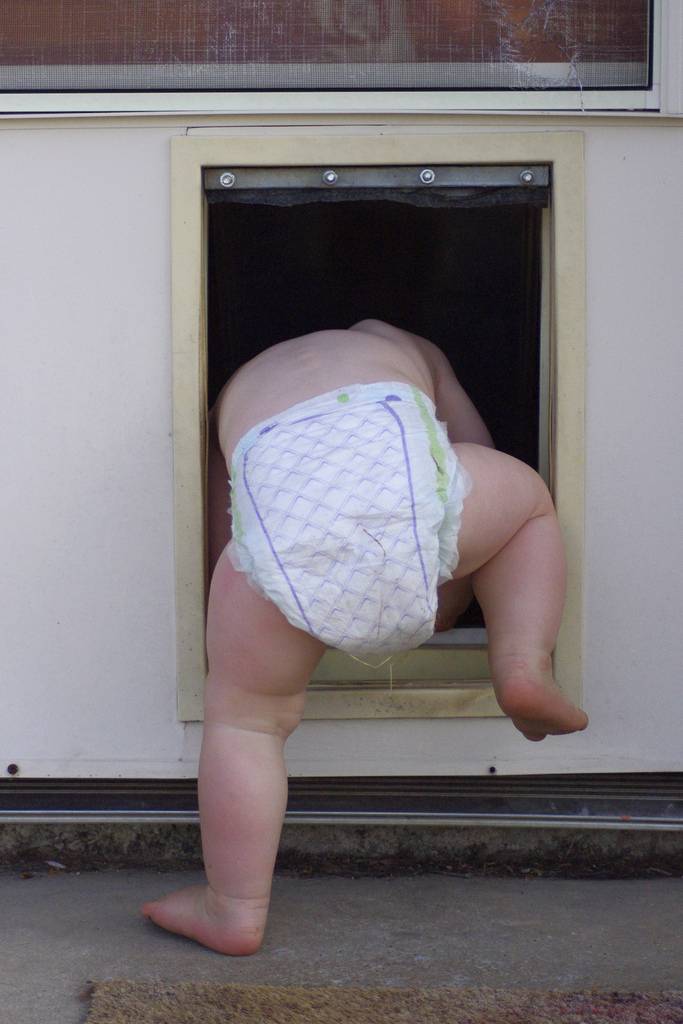Even at a tender age, there are instances when your little one needs to be away from the comforts of your home. This may include visits to their doctor, even if they’re not sick. Also, you may need to bring your baby with you on errands.
Every parent knows the importance of being prepared, especially when going out with a baby. A well-packed diaper bag can be a lifesaver, ensuring you have everything you need to keep your baby comfortable and happy while on the go.
In this guide, we at Omega Pediatrics will explore the essential items for a baby’s diaper bag to help make your outings stress-free and enjoyable. We have categorized the list for your ease and convenience. Let’s read on!
Diapering Essentials
Diaper changes are hallmarks of baby care. You need to change your baby’s diaper multiple times a day, even on the go. Hence, it becomes one of the basic must-haves in any diaper bag.
1. Diapers

The cornerstone of any diaper bag is, of course, the diapers. Ensure you bring enough diapers when you’re away from the house. The rule of thumb is one for every two hours you’ll be out, plus a couple of extras just in case.
For diapers on the go, there are individually packed ones available on the market. This packaging is especially beneficial for traveling—for convenient handling and hygienic presentation.
If you’re using cloth diapers, bring wet bags to store the soiled ones. It’s essential to get organized and hygienic, even for your used cloth diapers.
2. Wipes
Baby wipes are indispensable for diaper changes. They also come in handy for cleaning sticky hands and faces or wiping down surfaces. A travel-sized pack is recommended for convenient handling and takes up less space in your bag.
3. Changing Pad
A portable changing pad is essential for diaper changes on the go. Many baby bags come with an attached diaper changing pad. If yours doesn’t have one, consider buying one separately. Look for a lightweight pad that can be easily wiped and folds compactly.
Using a changing pad keeps your baby comfortable and helps maintain hygiene when using public diaper changing stations.
4. Diaper Rash Cream
Preventing and treating diaper rash is crucial, so always have a small tube of diaper cream in your bag. Opt for a cream that comes in a travel-friendly size. Applying diaper cream should be part of the routine for every diaper change.
Feeding Essentials
Babies need to be fed on demand. They don’t care whether they’re at home or anywhere else. Feeding becomes a vital routine. Hence, their feeding stuff is also a must-have in their diaper bag.
5. Bottles and Formula/Breast Milk
If your baby is bottle-fed, pack enough bottles for the time you’ll be out with your baby. Alongside, bring pre-measured formula or expressed breast milk. Consider using insulated bottle bags to keep milk at the right temperature.
If you’re breastfeeding, pack a nursing cover for privacy, if you prefer.
6. Snacks for Older Babies
For babies who have started eating solids, bring along some healthy snacks. Choose easy-to-pack, non-perishable options like rice puffs, fruit slices, or baby food pouches. Snacks can be a great way to keep your baby content during longer outings.
7. Bibs and Burp Cloths
Mealtime can get messy, so pack a few bibs to protect your baby’s clothes. Choose bibs that are easy to wipe clean or are machine washable. Burp cloths are also essential for cleaning up spit-ups and spills. Having a couple on hand is always a good idea.
Clothing Essentials
Apart from diapering and feeding routines, babies tend to be fussy. Don’t expect that they will sustain what they wear throughout the day. You need to make them comfortable in the clothes they wear, which likewise helps you stay stress-free too.
8. Extra Clothes
Babies are prone to spills, spit-ups, and diaper leaks, so packing extra outfits is a must. Aim to have at least one or two complete changes of clothes, including socks. Choose soft, comfortable clothing that’s easy to change into and occupies less space in the bag.
9. Weather-Appropriate Accessories
With the extra clothes, you need to have some accessories too. For colder days, include a hat or beanie, mittens, and a fleece jacket. In warmer weather, pack a sun hat and light, breathable layers. At all times, making your baby comfortable is foremost.
Ensure the clothing accessories are suitable for the weather. Layering is the key to adjusting your baby’s outfit according to the air temperature. We need to ensure your baby’s comfort and safety from harsh environmental elements
Comfort and Entertainment
Your little one tends to be restless and irritable, especially when they aren’t comfortable, but sometimes for no reason. This can be stressful for any parent. It’s best to bring comfort items to calm the baby’s mood and relieve your stress, too.
10. Pacifiers
If your baby uses a pacifier, pack a few spares. Pacifiers have a knack for disappearing at the most inconvenient times, and having extras ensures you won’t get caught without one. Keep them in a clean, sealed container to maintain hygiene.
Pacifier ties and bands with decorative clips at one end prove useful accessories. These are clipped onto the baby’s clothes to prevent the pacifier from falling to the ground or being thrown off unnecessarily when the baby gets fussy.
11. Favorite Toys
Bringing along your baby’s favorite toys can help keep them entertained and occupied during outings. These familiar items for your baby can put them at ease. For example, teething toys can be useful if your baby is at that stage.
12. Blanket
A lightweight, breathable blanket has multiple uses. It provides comfort, serves as a makeshift changing mat, or offers sun shade and protection. Choose a blanket that’s easy to fold and doesn’t take up too much space in your bag.
Health and Safety
13. Hand Sanitizer
Hand hygiene is crucial, especially when dealing with diaper changes and feedings outside the home. A baby-safe hand sanitizer is a must-have in every diaper bag.
14. First Aid Kit
A small first-aid kit that comes in handy for minor injuries. Include band-aids, antiseptic wipes, tweezers, and a digital thermometer. Many stores sell compact, travel-friendly first-aid kits, perfect for diaper bags.
15. Emergency Contact Information
Always have a list of important contact numbers in your diaper bag. Include your pediatrician’s number, emergency contacts, and any medical information pertinent to your baby. This information can be invaluable in an emergency.
How About Parent Essentials in Your Baby’s Diaper Bag?
Outings with a baby can be taxing for moms and caregivers, so they too have much-needed stuff to be included in the diaper bag. Pack a small snack and a bottle of water for yourself. You need to have in-between feedings and hydration, too.
A book or headphones can provide a brief escape when your baby is napping or happily occupied. Self-care is still essential for maintaining your energy and well-being while bringing your baby away from home.
Draw Up the Checklist of Your Baby’s Diaper Bag
After learning the essential items, as outlined in the preceding section, to be included in your baby’s diaper bag, it’s time to draw up a checklist.
As a parent or caregiver, a checklist makes you organized and efficient, accounting for and not forgetting the important items each time you need to go out with your baby. It makes packing quicker and easier, hence less stressful.
Regularly update your checklist to match your baby’s growing needs and the changing seasons. Additionally, you and your baby might have distinct and special needs when going out.
What Makes a Good Diaper Bag?
A good baby diaper bag should have key features that address the needs of the baby and the parent. A mom has always had her hands full with her active and adorable baby, so here are some essential elements to look for:
Style and Design
The bag should serve its basic purpose. A wide opening, yet fittingly secured, for easy and quick access to its contents. Also, it enables you to readily see what’s inside at one glance; no more grappling for small items at the sides and bottom of the bag.
Spacious Interior and Compartmentalized
There should be a spacious interior with multiple pockets to keep the small items in place and organized. This includes separate spaces for diapers, wipes, bottles, clothes, and other items, making it easy to find what you need quickly.
Insulation and Temperature Control
Milk and other baby food should be maintained at the right temperature, which is crucial for feeding on-the-go. This is where insulated pockets serve their purpose. This is particularly useful for parents who need to be out and about with their baby.
Comfort and Ergonomics
The bag should be designed with comfort in mind, featuring padded shoulder straps or handles that evenly distribute weight. This is especially beneficial for parents who need to carry the bag for an extended time.
Durability and Easy Cleaning
These bags are prone to spills and stains; hence, they should be durable with easy-to-clean materials. It could be stain-repelling fabric or specially treated interior fabric to inhibit mold and mildew growth. It should also be machine-washable.
Enjoy Baby’s Outing: Pack the Diaper Bag with Confidence and Ease
Packing your baby’s diaper bag doesn’t have to be a daunting task. By focusing on the basics and organizing your bag, you’re confident and prepared for anything that comes your way.
Use this guide to make sure you have everything you need. Also, the key features of the bag should cater to your and your baby’s needs.
We hope you find this guide helpful. And much more! We appreciate your sharing your must-have diaper bag items. We love hearing from other parents like you!
We at Omega Pediatrics have a rich reading resource of parenting tips and techniques, especially for new moms. Happy packing, and enjoy your baby outings!

